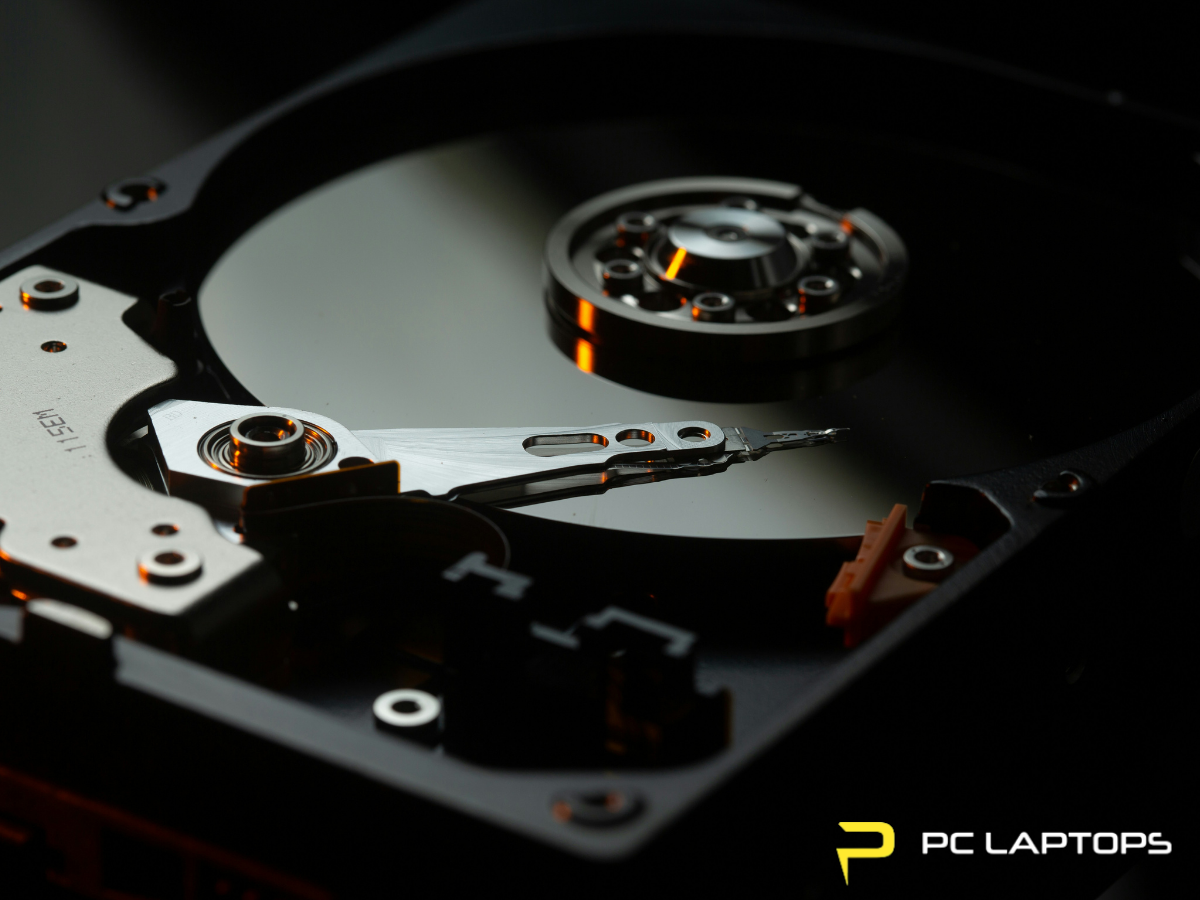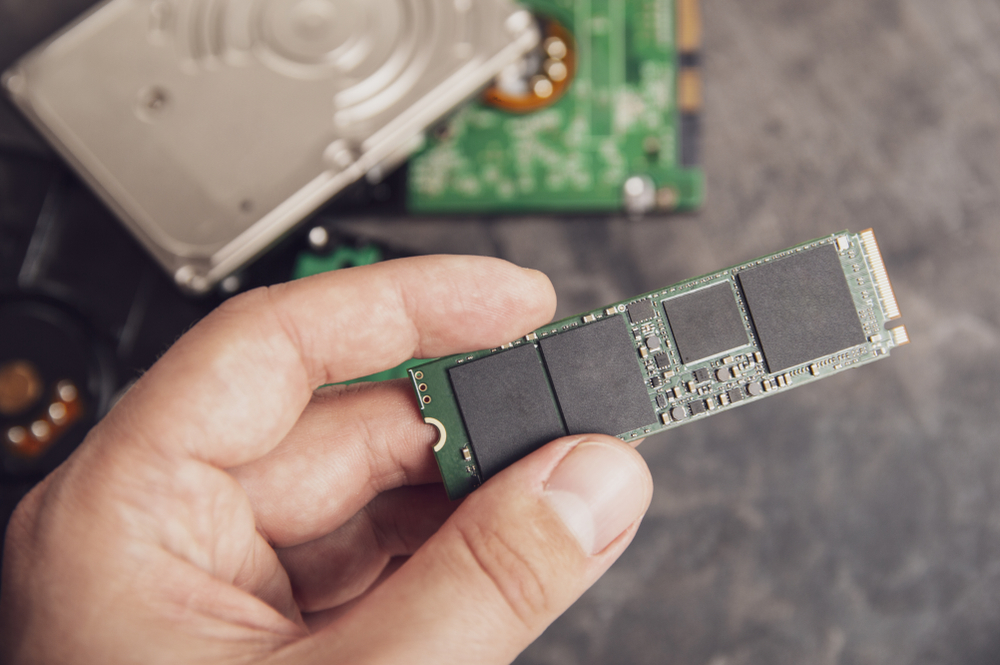Don't Panic – Let's Fix Your Hard Drive Problems
Is your computer suddenly freezing, refusing to boot, or showing strange disk error messages? Are you hearing suspicious clicking sounds from your hard disk? Whether you’re a casual user or a seasoned tech enthusiast, a failing hard drive can be stressful—but it doesn't have to mean data loss or the end of your machine.
At PC Laptops, we’ve helped thousands of customers across Utah and beyond diagnose, troubleshoot, and fix hard drive problems. Now we’re sharing our knowledge so you can tackle common drive issues from home—or know when it’s time to call in expert support.
In this comprehensive hard drive troubleshooting guide, we’ll walk you through:
- How to recognize the signs of a failing hard drive
- Easy troubleshooting steps for HDDs and SSDs
- How to try to recover important files from a failing or dead drive
- When to run a hard drive diagnostic test
- What to do when the disk is damaged or not recognized by the system
- When to replace a drive—and how to do it safely
- How to prevent future disk failures
Whether you're dealing with a traditional hard disk drive (HDD) or a solid state drive (SSD), we’ll help you understand what’s going wrong and how to fix it. Let’s dive in.
1. Recognizing the Warning Signs of Hard Drive Failure
The first step in solving any hard drive issue is knowing what failure looks (and sounds) like. There are several types of symptoms you might experience, and they usually fall into one of three categories: physical, performance-related, or software-related.
Physical Symptoms
If you hear or feel anything unusual from your drive, take notice immediately.
- Clicking or grinding noises – This could indicate a physical disk failure, especially in HDDs. It's often caused by a faulty read/write head.
- Excessive heat – If your hard disk or SSD is running hotter than normal, it might be on its way out.
- Visible damage – If your laptop has been dropped or your external hard drive took a hit, the internal components may be damaged or misaligned.
Pro Tip: If you hear clicking or grinding, shut down the system immediately by pressing the power button, unplug the power cable, and avoid turning it back on until you've spoken to a professional. This could help prevent further data loss.
Troubleshooting Themes for Computer Hard Drive Issues
Performance Symptoms of Hard Drive Issues
If you are experiencing performance symptoms with your hard drive, it may indicate a problem with the hard drive. Common signs include slow boot times, frequent error messages, and unusual noises coming from the drive. These can be symptoms of a failing drive, and it is important to troubleshoot hard drive issues promptly to avoid data loss.
Diagnosing the Problem
To start troubleshooting, you can perform a hard drive diagnostic test using built-in tools like disk utility on Windows 10. You may also consider using check disk to scan for disk errors and repair them. If the disk has failed or is corrupt, you might need to try to recover the data or replace it with a new hard disk.
Common Troubleshooting Steps
- Restart the computer to see if the issue persists.
- Check the power cable and connections to ensure the drive is receiving power.
- Use disk management tools to select the drive and analyze its status.
- If the drive is partitioned, ensure that the partitions are correctly configured.
- Consider connecting the drive to another computer to see if it's recognized.
Advanced Troubleshooting Techniques
If basic troubleshooting does not resolve the issue, you may need to delve deeper. This includes checking the disk controller and ensuring it is functioning properly. If the hard disk controller is faulty, it could lead to drive issues. In some cases, performing a format on the drive may be necessary, but this will result in data loss, so ensure you have backups of important files.
When to Seek Technical Support
If you continue to experience problems, it may be best to seek technical support. They can assist with more advanced data recovery methods or help you replace your failed hard drive. Remember, a bad hard drive can significantly impact your computer's performance, so addressing these issues as soon as they arise is crucial.
Performance issues are among the most common early warnings of drive failure.
- Slow file transfers or app loading times – When your files take forever to open, even though you have enough RAM and a decent processor, the hard drive might be the problem.
- Computer freezing or crashing – Sudden freezes or “Blue Screen of Death” (BSOD) errors in Microsoft Windows can be triggered by a bad disk.
- Files disappearing or becoming corrupt – If you notice files on the drive becoming unreadable or vanishing altogether, you might have a failing drive or bad sectors.
Software & System Errors
Watch out for these messages and alerts—they're often your operating system trying to warn you.
- "SMART Failure Predicted on Hard Disk" – This diagnostic test alert is triggered by your drive’s built-in monitoring system.
- "Boot Device Not Found" – When your computer can't boot into the OS, it might be due to a failed drive, disconnected cable, or corrupt boot partition.
- "No Operating System Found" – Often tied to boot problems or a corrupted logical disk.
If you’re seeing any of these error messages, it’s time to run a hard drive diagnostic test or get professional diagnostics done at PC Laptops.
2. Step-by-Step Troubleshooting for Hard Drive Issues
When troubleshooting hard drive problems, always start with the basics. Then work your way through more technical steps depending on what symptoms you're seeing.
Basic Troubleshooting Steps (For All Drives)
Before diving into advanced tools, run through these simple checks:
1.Restart the Computer
To restart your PC, click on the Start menu, select the power icon, and choose 'Restart'. Alternatively, you can press Ctrl + Alt + Delete, then select the power icon in the lower right corner and choose 'Restart'.
Troubleshooting Themes for Computer Hard Drive Issues
When facing computer hard drive issues, it’s essential to follow systematic troubleshooting themes to diagnose and resolve the problems effectively. Here are some common themes to consider:
1. Check Physical Connections
Ensure that all cables connecting the hard drive to the motherboard and power supply are secure and undamaged.
2. Verify Power Supply
Confirm that the hard drive is receiving power. Listen for spinning sounds or check for LED indicators.
3. Run Diagnostic Tools
Utilize built-in or third-party diagnostic tools to scan for errors or bad sectors on the hard drive.
4. Check for Software Issues
Investigate if software conflicts or malware are causing the hard drive to malfunction.
5. Update Drivers and Firmware
Ensure that the hard drive drivers and firmware are up to date to prevent compatibility issues.
6. Test on Another Computer
If possible, connect the hard drive to another computer to determine if the issue lies with the drive or the original system.
7. Data Recovery Options
If data loss is suspected, consider using data recovery software or professional services to retrieve important files.
By following these troubleshooting themes, you can identify and address common hard drive issues effectively.
2. Check Cables and Power
- Make sure the power cable is connected securely to your desktop or external hard disk.
- Try a different cable or USB port if you’re troubleshooting an external drive.
- Check the SATA or power connection to the hard disk controller inside a desktop PC.
- If the drive isn't detected at all, try connecting it to another computer to confirm if the drive is at fault.
3. BIOS/UEFI Check
Enter your system's BIOS setup (usually by pressing Delete or F2 during boot). Check if the hard drive is recognized. If not, it might be a failed hard disk, a disconnected power cable, or a bad disk controller.
Troubleshooting HDDs (Hard Disk Drives)
Traditional spinning HDDs are more prone to mechanical failure, but they're also easier to test and repair in some cases.
Use CHKDSK or Disk Utility to troubleshoot hard drive issues. These tools can help identify and fix errors on your hard drive or hard disk. If you encounter a disk error or an error message indicating that the hard drive is failing, you can follow these troubleshooting steps:
- Restart the computer and access the BIOS setup to check if the hard disk is recognized by the system.
- Run a hard drive diagnostic test using the command prompt or your operating system's built-in tools.
- Check the power cable and connections to ensure the drive is working properly.
- If the drive still fails, try connecting the drive to another computer or use a different USB drive to see if the problem persists.
- Consider data recovery options if you suspect data loss due to a failed hard drive.
Remember that a corrupt or damaged disk might lead to further problems, so taking action quickly can help prevent data loss.
- On Windows: Open Command Prompt as Administrator and type:
chkdsk C: /f /r
This checks the drive for errors and attempts to repair them. - On Mac: Use Disk Utility to run First Aid on your physical disk.
Monitor the Drive with CrystalDiskInfo
Download and run CrystalDiskInfo to check drive health, temperature, and the number of bad sectors.
Check Disk Management
In Windows Disk Management, look for:
- Drives showing as "Unallocated" or "RAW" (possible partition or formatting error)
- Inactive or missing drive letters
- Use this tool to reactivate disk volumes or format the drive (if needed)
Troubleshooting SSDs (Solid State Drives)
SSDs are faster but can fail silently. They don’t make noise when failing, and often problems stem from firmware or logical errors.
What is ssd? A Solid State Drive (SSD) is a type of storage device that uses flash memory to store data, providing faster access times and improved performance compared to traditional hard disk drives (HDDs). SSDs are more reliable, consume less power, and have no moving parts, making them less susceptible to physical damage.
Update Firmware
Visit your SSD manufacturer’s website and download any available firmware updates.
Check Wear Level
Use manufacturer tools (like Samsung Magician, Crucial Storage Executive) to check the wear level. Drives with 90% wear or more are likely near the end of life.
Enable TRIM
TRIM helps your OS manage deleted files more efficiently, improving SSD lifespan.
To verify TRIM is enabled in Windows, open Command Prompt and run:fsutil behavior query DisableDeleteNotify
If the result is 0, TRIM is enabled.
Advanced Tools for Deeper Diagnostics
If basic troubleshooting doesn’t help, here are more advanced steps:
Windows Memory Diagnostic
Sometimes RAM issues can mimic hard drive failure. Run this tool to rule out memory corruption.
Manufacturer Diagnostic Tools
Most drive manufacturers provide free diagnostic tools:
- SeaTools (Seagate)
- WD Dashboard (Western Digital)
- Intel SSD Toolbox
Run a hard drive diagnostic test to get SMART data, temperature logs, and more.
When to Stop DIY Troubleshooting
If your drive:
- Is making loud clicking or grinding sounds
- Is not recognized by the system even after trying another cable or computer
- Contains important files you haven’t backed up
Stop and contact data recovery professionals. Trying to recover data from a failing or physically damaged drive without the right tools can make things worse.




